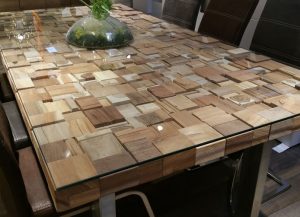Glass & glazing Blog
Decorating with Mirrors in the Home
Mirrors are a great way to decorate the home, and they have some benefits as well. They can reflect the light, open up the space, and add a decorative touch to the existing look. It’s especially helpful to have mirrors to decorate small spaces, as they can help reduce any claustrophobic-like feelings. There are definitely some standards, however, to abide by to make sure the room doesn’t look like a house of mirrors at a theme park.
Make sure that the mirror is hung at a correct height. For example, a mirror placed too high in the room may not reflect anything but the wall across from it and the ceiling. The mirror should reflect the entire room, which is what helps open up the area. Make sure allowances are made for the frame as well, especially if it is decorative.
Find the right height of mirror. It is common to see large mirrors used to open up rooms by being placed against the wall. It’s important, however, to make sure that the glass is not cut too short, as that will reduce the effectiveness of the mirror. Find one that is about three quarters’ height of the wall, at minimum, for balance.
Let the mirror reflect natural light. Unless the mirror is there for a practical use, like for checking for appearance before heading out the door for the day, it should be placed in such a way that it reflects light coming through a window.
Make sure that existing fixtures don’t interfere. If a large light fixture, or a particularly bright light, is already in the room, adding a mirror may cause glare, due to the reflective surface. Make sure that the light in the room does not overpower the natural light and reflection.
Make sure the mirror reflects what it should reflect. Stand where the mirror could be placed and take a look at the area opposite. Is it a nice look, or is it something that shouldn’t be reflected, like a chair that accumulates everyone’s jumpers and coats? Clean up the scene or find another piece to decorate with.
Hang the mirror flat to the wall. If using one hook and a wire to put the mirror up, it can slant forward and skew the reflection, or the mirror won’t reflect the desired scene. By using two hooks, one on each side of the frame, the mirror will sit flush, and reflect back without any strange angle.
Consider the existing colours of the room. This is something to watch for, especially if a wide mirror is being considered. The reflection of the existing colours of whatever is across from the mirror will be intensified, almost tinting the reflection back. This is why light colours and wide mirrors are commonly combined, as hues like white, soft grey and beige seem brighter with the reflection.
However, make sure the room isn’t already busy. When using a mirror to decorate, account for the fact that the reflection will figuratively double the room — including all the existing decor. If there are busy patterns, walls, or simply a lot going on, adding a mirror may take the room from busy to overwhelming.
In short, there are many things to consider when thinking of using a mirror as a decor choice. However, there are plenty of benefits to doing so — look for some inspiration and see if it’s the right choice for the space!























